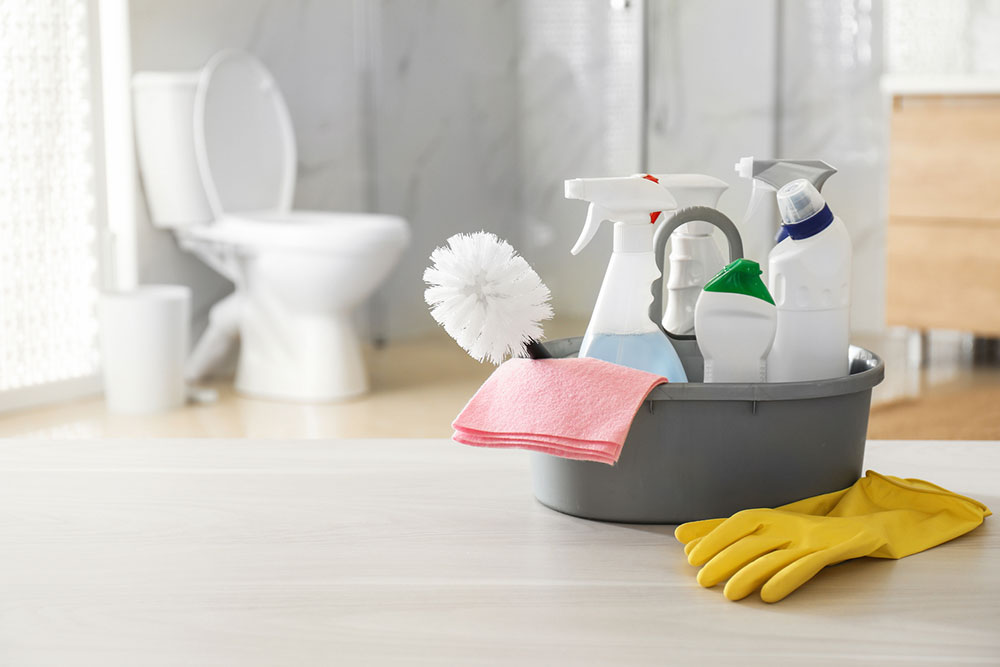Helpful tips for choosing the right bathroom cleaner

Cleaning and maintaining a hygienic bathroom is a top priority for every homeowner. Among the many bathroom fixtures, the shower requires regular cleaning to prevent the buildup of soap scum and grime. However, with various options available on the market, choosing the right shower cleaner for the bathroom can be a daunting task. To aid the purchasing process, here are some handy tips to keep in mind while buying bathroom shower cleaners.
Consider the shower surface
The first and most crucial step in choosing a bathroom shower cleaner is to consider the type of surface one has. This is because showers can be made of various materials such as tile, glass, acrylic, or fiberglass. This means different surfaces may require specific types of cleaners to avoid damage. For example, abrasive cleaners may scratch glass surfaces, while harsh chemicals can discolor acrylic or fiberglass. So buyers are suggested to always read the manufacturer’s guidelines and choose a cleaner that is compatible with their shower surface to prevent any unintended damage.
Assess the severity of the stains
Not all shower stains are created equal. Some showers may have minor soap scum and hard water stains, while others may be plagued with stubborn mold and mildew. So, before purchasing a cleaner, assess the severity of the stains in the shower.
A general-purpose cleaner may suffice for mild stains, while heavy stains may require a specialized mold and mildew remover or a heavy-duty cleaner. Choosing the right cleaner based on the severity of the stains will ensure efficient cleaning and prevent unnecessary scrubbing.
Look out for eco-friendly options
Today, with sustainable living on the rise, being environmentally conscious is incredibly important. So, look out for eco-friendly bathroom shower cleaners.
Most of these cleaners are formulated with natural ingredients and are less harmful to the environment and human health. Therefore it’s advised that shoppers look for certifications like EPA Safer Choice or Green Seal, which can guarantee that the product meets specific environmental standards. Furthermore, eco-friendly cleaners act as a responsible choice that can effectively clean one’s shower without exposing one to the use of harsh chemicals and their effects.
Consider scent preferences
The scent of one’s bathroom shower cleaner can significantly impact one’s cleaning experience. Some people prefer fresh and clean scents, while others may opt for more fragrant options like citrus, lavender, or eucalyptus. Nevertheless, it’s essential to choose a cleaner with a scent that one finds pleasant, as it can make the cleaning process more enjoyable. However, if anyone in the family has sensitivities or allergies, it is imperative to consider a fragrance-free option to avoid adverse reactions.
Watch out for safety considerations
Safety should always be a top priority when selecting a bathroom shower cleaner. Some cleaners contain harsh chemicals that can prove harmful if ingested or inhaled, and they may require careful handling or protective gear such as gloves and masks.
Further, if one has children or pets in their home, it’s especially important to choose a cleaner that is safe for use around them. So, look for products with childproof caps and consider non-toxic, biodegradable, or hypoallergenic options to ensure the safety of one’s family and friends.
Look for ease of application
Convenience matters when it comes to cleaning the shower. So, choose a bathroom shower cleaner that is easy to apply and use. Spray bottles with adjustable nozzles are popular choices, as they allow the user to control the amount of product that needs to be applied and target specific areas. Besides these, some products also come in convenient wipes or pre-moistened pads for quick and effortless cleaning.
Consider cleaning power and efficiency
The primary purpose of a bathroom shower cleaner is to remove dirt, stains, and soap scum efficiently. So, look for products with proven cleaning power and effectiveness. Here, customer reviews and product ratings can provide valuable insights into how well a cleaner performs.
Additionally, products that are labeled as “fast-acting” or “no-scrub” can help in saving time and effort put in during the cleaning process.
Opt for options providing residue and streak-free finish
One of the common complaints with some bathroom shower cleaners is the residue they leave behind, which can create streaks and make the shower look dull. To avoid this issue, select a cleaner that promises a streak-free finish. A clean, residue-free shower not only looks better but also stays cleaner for longer.
Consider its compatibility with cleaning tools
Consider the cleaning tools that will be used with the bathroom shower cleaner. Some cleaners are designed with specific cleaning tools, such as scrub brushes or sponges. So, make sure the cleaner chosen is compatible with them. This ensures effective results. Furthermore, if one has a shower with hard-to-reach areas, it’s best to invest in a cleaner with an extended nozzle or brush attachment to tackle every corner effectively.
Consider price and value
Last but not least, it’s important to consider one’s budget when choosing a bathroom shower cleaner. While there are premium cleaners on the market, one can find effective options at more affordable price points.
Then, compare prices and sizes to determine the best value for the money that’s to be spent. Finally, keep in mind that a higher-priced product may offer better performance, but it’s essential to strike a balance between effectiveness and your budget.
Keeping the bathroom shower clean is essential for a hygienic and aesthetically pleasing home. One can make an informed decision by considering the above-mentioned tips while choosing bathroom shower cleaners. Then, armed with the tips, one can maintain a sparkling clean shower that enhances the overall appeal of the bathroom at all times. If confused, one can also contact a professional cleaning service once for more information on bathroom cleaners.


